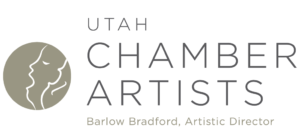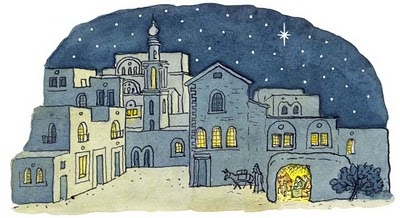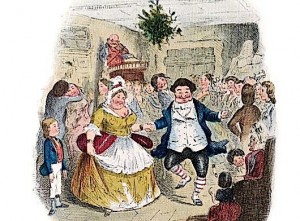Christmas Program Sneak Peek
“Caroling, Caroling”
Dr. Roger Miller, Professor Emeritus, University of Utah
BORN IN THE U.S.A
What part of the Christmas celebration is more universally beloved than its uniquely wonderful music? No Yuletide would be complete without the manger carols, shepherd songs, and angel choruses, not to mention the feasting and wassail tunes that gladden our hearts with holiday cheer and 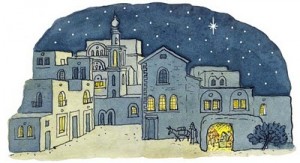 good will. America has contributed its fair share to the musical treasury of Christmas, including such traditional favorites as Phillips Brooks “O Little Town of Bethlehem,” Edmund H. Sears’ “It Came upon the Midnight Clear” and Longfellow’s “I Heard the Bells On Christmas Day” — each sung over the years to more than one tune. On the lighter side are the likes of “Up On the Housetop,” “Rudolf,
good will. America has contributed its fair share to the musical treasury of Christmas, including such traditional favorites as Phillips Brooks “O Little Town of Bethlehem,” Edmund H. Sears’ “It Came upon the Midnight Clear” and Longfellow’s “I Heard the Bells On Christmas Day” — each sung over the years to more than one tune. On the lighter side are the likes of “Up On the Housetop,” “Rudolf, 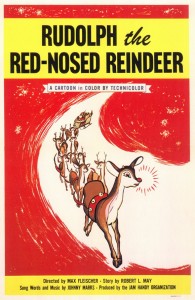 the Red-nosed Reindeer,” “Santa Claus Is Coming to Town,” and of course the holiday classics that we all love — songs like “Chestnuts Roasting on an Open Fire,” “Silver Bells” and at the top of everybody’s list, “White Christmas.” Not to be discounted is the beautiful
the Red-nosed Reindeer,” “Santa Claus Is Coming to Town,” and of course the holiday classics that we all love — songs like “Chestnuts Roasting on an Open Fire,” “Silver Bells” and at the top of everybody’s list, “White Christmas.” Not to be discounted is the beautiful
folk-inspired music of the southern mountains — John Jacob Niles’ “I Wonder as I Wander,” “Jesus, Jesus, Rest Your Head” — and slave songs and spirituals — “Mary Had a Baby,” “Rise Up, Shepherd and Follow,” and “Behold, that Star.” What a Christmas heritage!
THE BURT LEGACY
Tonight, we celebrate yet another home-grown Christmas legacy, that of the three B’s — not, of course, Bach, Beethoven, and Brahms, but Burt, Betinis, and Bradford. Among the most beloved of Christmas traditions to evolve in America during the past century are the Christmas Carols of Alfred Burt, son of an Episcopal clergyman, the Rev. Bates Burt of Pontiac and Marquette, Michigan. Known widely as the “Alfred Burt Carols,” these sometimes worshipful, sometimes entertaining contributions to the music of Christmas are in a class by themselves, coming straight out of the Burts’ own family traditions in a truly American celebration of the holidays. The story of the Rev. Burt writing original carols and sending them out as Christmas cards is told elsewhere in these notes, a tradition continued after his death in 1948 by his son “Al” and, more recently, by his great-grand daughter Abbie Betinis. Together, they represent a century of delightful, family music making, winning hearts not only in their own country but of people around the world. Add to that our own Barlow Bradford’s superb original settings and arrangements, and you have all the ingredients for a truly magical night of music.
“Caroling, Caroling,” theme for this year’s program, seems to embody the very soul of
Christmas as it might have been celebrated a hundred years ago in small-town America.
Using a three-verse/chorus text by family friend Wihla Hutson (organist at the Burt’s Episcopal Church in Pontiac, Michigan), the music crackles with energy. The happy, swinging rhythm of pealing church bells (“Ding dong, ding dong”), coupled with the driving triplets of the thematic word “car – o – ling,” is the music’s engine. Simple rhymed pairs and a festive ritornello (“Christmas bells are ringing”) complete the overall scheme for one of Alfred Burt’s most popular carols.
Another mini-masterpiece,”Bright, Bright the Holly Berries,” is filled with the same joyful
exuberance as “Caroling, Caroling.” Many holiday traditions are crammed into Wihla Hutson’s three verses (the holly wreath, the mistletoe, the snowy meadow, tinseled things, and the “dark and spicy tree). And again we hear the paired rhymes, the driving rhythms and recurrent ritornellos (“This is Christmas”) so characteristic of her convivial poetry. This is music that makes everyone want to sing!
“Carol of the Mother” (“Sleep, Baby Mine”), which opens the second half, may seem somewhat out of place, even in this highly eclectic program. Obviously, a lullaby, it is shaped as a slow waltz and has the cool, modern sound of a “pop” song from the 1940s and ’50s, crooned by Frank Sinatra or Bing Crosby. Maybe not quite what a church organist (again Wihla Hutson) expected from her simple berceuse, but this is Alfred Burt, the professional jazz musician (trumpet) showing up to rock the Christ Child to sleep with a little bit of his own personality coming through.
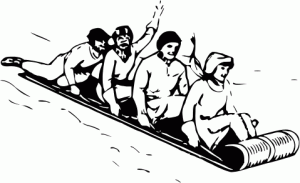 Abbie Betinis’s highly individual pieces show that she is every bit the heir to the Burt family legacy. With all the trappings of a midwinter outing, “Run, Toboggan, Run” borrows its theme from the annual celebration of the holidays at the Burt family retreat in Michigan’s snowy north. The other three pieces find themselves in more serious texts: a prayer for world peace, strength in adversity, and a lovely escape into the quiet beauty of “silver pines” on a moonlit winter night. Abbie’s own reflections on each of these very personal works reveal the ongoing strength of this marvelous family.
Abbie Betinis’s highly individual pieces show that she is every bit the heir to the Burt family legacy. With all the trappings of a midwinter outing, “Run, Toboggan, Run” borrows its theme from the annual celebration of the holidays at the Burt family retreat in Michigan’s snowy north. The other three pieces find themselves in more serious texts: a prayer for world peace, strength in adversity, and a lovely escape into the quiet beauty of “silver pines” on a moonlit winter night. Abbie’s own reflections on each of these very personal works reveal the ongoing strength of this marvelous family.
A BRADFORD CHRISTMAS
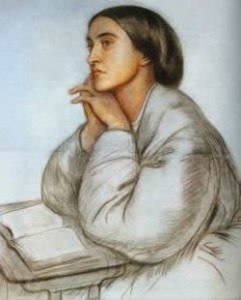 The Bradford settings — several traditional carols, and two entirely new works — are meant, in a very real sense, to honor the spirit and tradition of the Burt family. As always, the crystal clear, velvet voices of Utah Chamber Artists are matched by Bradford’s masterful orchestral writing, with soaring orchestral colors, imaginative harmonies, sensitive interpretations and inspired commentaries on the texts. The first two of these, on texts by the much-admired London poetess, Christina Rossetti (1830-1894), give a glimpse of different aspects of Bradford’s rare skill (one could easily say “genius”). In the first, “The Shepherds Had an Angel,” the voices are set against a murmuring orchestral tapestry in a gentle, lyrical melody that seems to capture the naïve wonder of a child’s first intimations of the true meaning of Christmas. “In the Bleak Midwinter” is a prime example of Bradford’s ability to give fresh meaning to a well-known text. It begins with a remarkably solemn, almost melancholy choral setting — at once modern and medieval — of Rossetti’s famous poem. Soft and distant to start, the music gradually, but inexorably, begins to soar in a glorious celestial march with brass and pounding rhythms to herald “The Lord God Almighty, Jesus Christ.” Then, just as effortlessly the rhetoric subsides into personal reflection on the beloved final couplet: “If I were a Wise Man, I would do my part; Yet what can I give Him: give my heart.”
The Bradford settings — several traditional carols, and two entirely new works — are meant, in a very real sense, to honor the spirit and tradition of the Burt family. As always, the crystal clear, velvet voices of Utah Chamber Artists are matched by Bradford’s masterful orchestral writing, with soaring orchestral colors, imaginative harmonies, sensitive interpretations and inspired commentaries on the texts. The first two of these, on texts by the much-admired London poetess, Christina Rossetti (1830-1894), give a glimpse of different aspects of Bradford’s rare skill (one could easily say “genius”). In the first, “The Shepherds Had an Angel,” the voices are set against a murmuring orchestral tapestry in a gentle, lyrical melody that seems to capture the naïve wonder of a child’s first intimations of the true meaning of Christmas. “In the Bleak Midwinter” is a prime example of Bradford’s ability to give fresh meaning to a well-known text. It begins with a remarkably solemn, almost melancholy choral setting — at once modern and medieval — of Rossetti’s famous poem. Soft and distant to start, the music gradually, but inexorably, begins to soar in a glorious celestial march with brass and pounding rhythms to herald “The Lord God Almighty, Jesus Christ.” Then, just as effortlessly the rhetoric subsides into personal reflection on the beloved final couplet: “If I were a Wise Man, I would do my part; Yet what can I give Him: give my heart.”
Bradford’s high-energy setting of “A Day, A Day of Glory” by the 19th-century English
clergyman and hymn composer John M. Neale is sure to be a crowd-pleaser, with its colorful brass, cheerful percussion, and pulsing, gigue-like rhythms. Introduced by a combination of fluttering strings, flutes, triangle and claves, it seems constantly to renew itself in a rousing celebration of pomp, with a hint of medieval pageantry. The last three pieces on tonight’s program are also the work of Bradford. “Joseph Dearest, Joseph Mine,” as might be expected, is a lilting cradle song set to gently rocking strings, with thoughtful orchestral commentaries exhibiting all the creative intuition of a master arranger. “Was Not Christ Our Savior” reflects the tone of its author, Thomas Tusser (ca. 1515-1580). Known both for his book on animal husbandry and the quite different activities of a chorister and poet, Tusser lived the quiet country life of the typical 16th-century English farmer, as reflected in the simple piety of his poems. Tonight’s setting is new and remains a surprise but is certain to mirror these same virtues in ways that are yet to be heard. The final number, “Christmas Carol,” on a text by George Wither (1588-1667), has all the makings of a rollicking English wassail, with feasting and drinking, dancing and singing, “to bear witness we are merry.”
